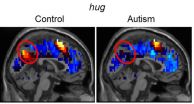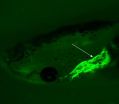(Press-News.org) A new method for determining lung cancer risk could more efficiently identify individuals for annual screening and catch more cancers early, according to a study published in this week's PLOS Medicine. The study, conducted by Martin Tammemägi of Brock University, Canada, and colleagues, evaluates a lung cancer risk prediction model and identifies a risk threshold for selecting individuals for annual lung cancer screening.
Computed Tomography (CT) screening can identify lung tumors while they are still treatable, and the US National Lung Screening Trial (NLST) found that annual screening of high-risk smokers can reduce lung cancer mortality by 20%. The best way to identify those at high risk remains an important question. The U.S. Preventive Services Task Force (USPSTF) recommends annual screening based on hard cutoffs for age and smoking duration/intensity, and doesn't recommend screening former smokers who quit more than 15 years ago. The PLCOm2012 model was developed based on studying lung cancer incidence in participants from the Prostate, Lung, Colorectal and Ovarian Cancer Screening Trial (PLCO). In addition to considering age, smoking duration/intensity, and quit time of former smokers, PLCOm2012 also considers race/ethnicity, socioeconomic circumstance, body mass index, personal history of cancer, chronic obstructive pulmonary disease, and family history of lung cancer to determine a risk score for lung cancer.
Tammemägi and colleagues used data from the NLST to identify a risk threshold (PLCOm2012 score ≥ 0.0151) to identify people who should receive annual CT screening. This threshold was applied, alongside the USPSTF criteria, to smokers who were screened in the PLCO trial. The authors found that 8.8% fewer people exceeded the threshold than met the USPSTF criteria (p < 0.001), but 12.4% more lung cancers were identified using the threshold. Using the threshold resulted in higher sensitivity (80.1% [95% CI 76.8%-83.0%] versus 71.2% [95% CI 67.6%-74.6%], p < 0.001), specificity (66.2% [95% CI 65.7%-66.7%] versus 62.7% [95% CI 62.2%-63.1%], p < 0.001), and positive predictive values (4.2% [95% CI 3.9%-4.6%] versus 3.4% [95% CI 3.1%-3.7%], p < 0.001) than UPSTF criteria. The authors noted that 8.5% of smokers who quit more than 15 years ago exceeded the PLCOm2012 threshold, and there were no never-smokers who exceeded the threshold. Additionally, risks and incidence of lung cancer were significantly greater for smokers aged ≥65-80 years than among those aged 55-64 years.
Applying the PLCOm2012 risk threshold can more efficiently identify candidates for CT screening than the USPSTF criteria.
The authors say: "This should make lung cancer screening more attractive for policy-makers, and more affordable for health systems."
Data available for this study did not allow for cost-effectiveness evaluation.
INFORMATION:
Funding: Although the National Cancer Institute funded the PLCO and NLST, there were no funding sources for the current ancillary study, and no external agency had influence or a role in the current study's design, conduct, data collection, analysis, decision to publish, or preparation of the manuscript.
Competing Interests: CB is a consultant for Medial Cancer Screening, Ltd., a diagnostic algorithm start-up company based in Tel Aviv working on improved methods of early detection of cancer using pre-existing information in the medical record.
Citation: Tammemägi MC, Church TR, Hocking WG, Silvestri GA, Kvale PA, et al. (2014) Evaluation of the Lung Cancer Risks at Which to Screen Ever- and NeverSmokers: Screening Rules Applied to the PLCO and NLST Cohorts. PLoS Med 11(12): e1001764. doi:10.1371/journal.pmed.1001764
Author Affiliations:
Brock University, CANADA
School of Public Health, University of Minnesota, UNITED STATES
Marshfield Clinic, UNITED STATES
Medical University of South Carolina, UNITED STATES
Henry Ford Health System, UNITED STATES
Information Management Systems, UNITED STATES
Johns Hopkins Medicine, UNITED STATES
IN YOUR COVERAGE PLEASE USE THIS URL TO PROVIDE ACCESS TO THE FREELY AVAILABLE PAPER:
http://www.plosmedicine.org/article/info%3Adoi%2F10.1371%2Fjournal.pmed.1001764
Contact:
Martin Carl Tammemägi
Brock University
CANADA
+1 (416) 414-0521
martin.tammemagi@brocku.ca
PITTSBURGH--Psychiatric disorders -- including autism -- are characterized and diagnosed based on a clinical assessment of verbal and physical behavior. However, brain imaging and cognitive neuroscience are poised to provide a powerful advanced new tool.
Carnegie Mellon University researchers have created brain-reading techniques to use neural representations of social thoughts to predict autism diagnoses with 97 percent accuracy. This establishes the first biologically based diagnostic tool that measures a person's thoughts to detect the disorder that affects many children ...
People could be putting their lives at risk by dismissing potential warning signs of cancer as less serious symptoms, according to a Cancer Research UK-funded study* published in PLOS ONE today (Tuesday).
More than half (53 per cent) of 1,700** people who completed a health questionnaire said they had experienced at least one red-flag cancer 'alarm' symptom during the previous three months***. But only two per cent of them thought that cancer was a possible cause.
Researchers sent the questionnaire listing 17 symptoms**** - including 10 widely-publicised potential cancer ...
LIMA--(2 December 2014) A new peer-reviewed study, released today at the start of the UN climate conference in Peru, reveals the unprecedented amount of carbon stored within the nine-nation network of Amazonian indigenous territories and protected natural areas. Accepted for publication in Carbon Management, the paper entitled, "Forest Carbon in Amazonia: The Unrecognized Contributions of Indigenous Territories and Protected Natural Areas," suggests that protecting the vast amount of carbon stored above ground in the forests of indigenous and protected lands - totaling ...
COLUMBIA, Mo. - According to a recent report from the Federal Reserve Board, 31 percent of Americans surveyed said they had no retirement savings, and almost half were not actively thinking about planning for retirement. Studies show that many Americans do not invest because they distrust the market and fear financial losses. Now, a University of Missouri researcher has found a way for financial planners to help decrease their clients' worries, which stem from the fear of losing money.
Michael Guillemette, an assistant professor in the MU College of Human Environmental ...
EAST LANSING, Mich. - To hunt or not hunt wolves can't be quantified as simply as men vs. women, hunters vs. anti-hunters, Democrats vs. Republicans or city vs. rural.
What's truly fueling the divisive debate is fear of wolves or the urge to care for canis lupis. The social dynamics at play and potential options for establishing common ground between sides can be found in the current issue of the journal PLOS ONE.
"People who are for or against this issue are often cast into traditional lots, such as gender, political party or where they live," said Meredith Gore, associate ...
Using a novel gene knock-in technique, effective insertion of an exogenous gene was demonstrated in human cells and in animal models, including silkworms and frogs. This strategy universally enables gene knock-in not only in cultured cells, but also in various organisms.
Genome editing using programmable nucleases enables homologous recombination (HR)-mediated gene knock-in. HR activity, however, is relatively low in most cultured cells and organisms. This problem presents technical hurdles for the application of HR-mediated knock-in technology in the field of life sciences. ...
RICHLAND, Wash. - A new study will help researchers create longer-lasting, higher-capacity lithium rechargeable batteries, which are commonly used in consumer electronics. In a study published in the journal ACS Nano, researchers showed how a coating that makes high capacity silicon electrodes more durable could lead to a replacement for lower-capacity graphite electrodes.
"Understanding how the coating works gives us an indication of the direction we need to move in to overcome the problems with silicon electrodes," said materials scientist Chongmin Wang of the Department ...
HANOVER, N.H. - Logging doesn't immediately jettison carbon stored in a forest's mineral soils into the atmosphere but triggers a gradual release that may contribute to climate change over decades, a Dartmouth College study finds.
The results are the first evidence of a regional trend of lower carbon pools in soils of harvested hardwood forests compared to mature or pristine hardwood forests. The findings appear in the journal Global Change Biology Bioenergy. A PDF of the study is available on request.
Despite scientists' growing appreciation for soil's role in the ...
PULLMAN, Wash. - More than one-third of new commercial building space includes energy-saving features, but without training or an operator's manual many occupants are in the dark about how to use them.
Julia Day recently published a paper in Building and Environment showing for the first time that occupants who had effective training in using the features of their high-performance buildings were more satisfied with their work environments. Day did the work as a doctoral student at Washington State University; she is now an assistant professor at Kansas State University.
Closed ...
TORONTO, ON - Scientists have long known that air pollution caused by cars and trucks, solvent use and even plants, is reduced when broken down by naturally occurring compounds that act like detergents of the atmosphere. What has not been well understood until now are the relative contributions of all the processes producing such compounds.
A new study, led by University of Toronto atmospheric chemist Jennifer Murphy, shows a key component of the process is the soil beneath our feet.
"Pollutants in the atmosphere are broken down by hydroxyl radicals that are produced ...



